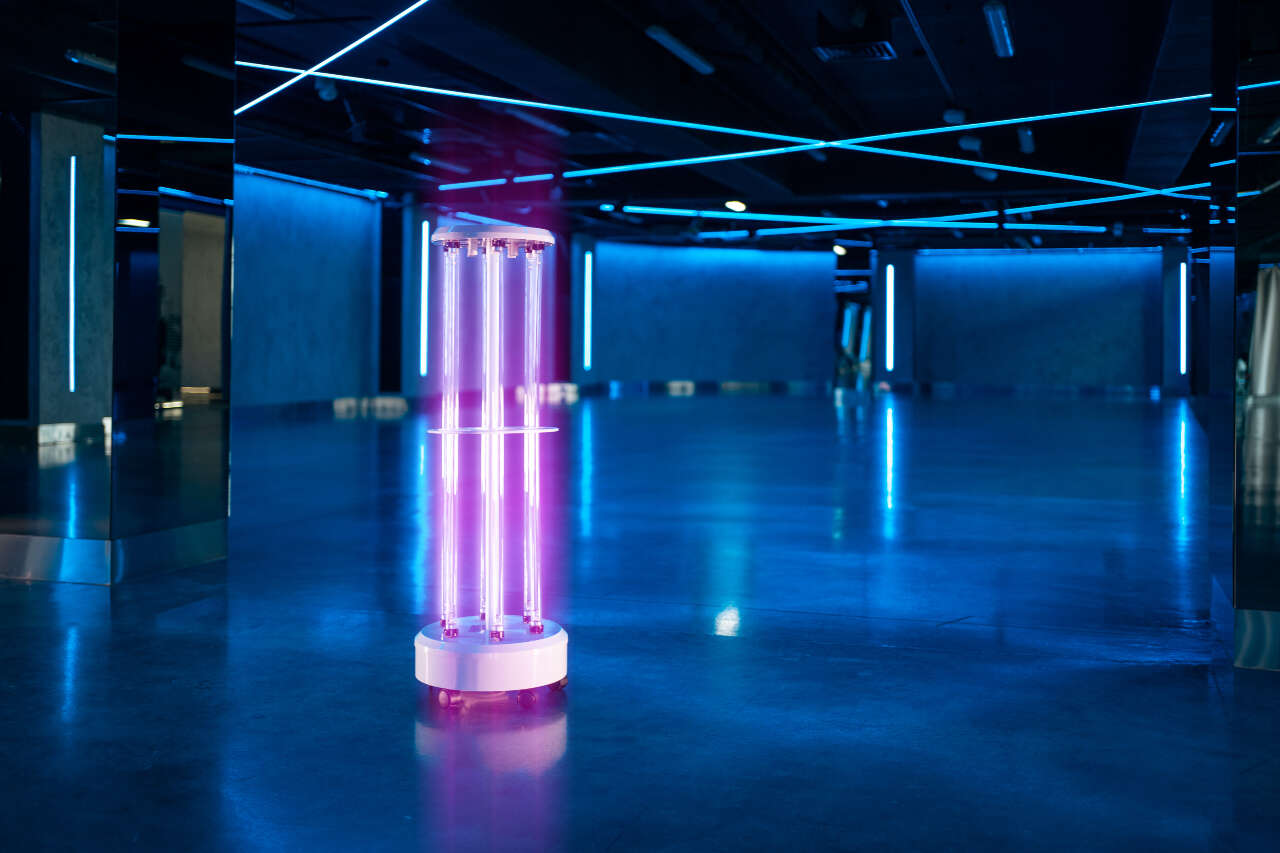
Office buildings and schools have seen the greatest challenges. According to the Centers for Disease Control and Prevention, “SARS-CoV-2 viral particles spread between people more readily indoors than outdoors. Indoors, the concentration of viral particles is often higher than outdoors, where even a light wind can rapidly reduce concentrations.”

Returning to work and school this autumn requires safe spaces free from persistent viruses. But how do we create and maintain healthy facilities that protect staff and students from infection as the emergence of the Delta variant drives a resurging pandemic?
New tech solutions for fighting germs
Traditionally, creating and maintaining a safe and healthy facility has required extensive cleaning crews and using potentially harmful chemicals in decidedly old-fashioned and hit-or-miss ways.
However, there are new and emerging technologies that provide alternatives to labour-intensive routines and hazardous sterilizing products. Facilities managers can employ electrostatic sprayers, foggers, misters, or vaporisers to disperse disinfectants to clean and sanitise indoor spaces. However, opting for harsh aerosolised chemicals and lengthy sanitising measures can also be tedious, expensive and hazardous to the health of the same people building owners and managers hope to protect.
A better alternative is UV technology, harnessing the power of the sun to disinfect indoor places. More than 140 years and tens of millions of dollars of research have proved that UV and violet-blue light is extremely effective at destroying germs. The key is that the UV light systems need to be properly designed, tested, installed and operated.
UV light produces electromagnetic energy that can destroy the ability of microorganisms to reproduce and by causing photo-chemical reactions in the crucial nucleic acids, DNA and RNA.
Pulsed xenon UV technology builds on this research and enables UV and violet-blue light to be even more effective and adaptable to everyday uses. It produces a powerful, broad-spectrum light, producing germicidal UV-C, UV-B, UV-A, and violet-blue to optimise their efficiency. UV solutions can help the owners and operators of offices, schools, and other indoor facilities prepare for future uncertainties and respond to new opportunities.
The right upgrades for commercial and residential space
In both residential and commercial real estate, building owners are facing unprecedented challenges attracting tenants and businesses to rent spaces. Business clients have embraced the work-from-home model, while residential clients have fled to free-standing homes far from the city.
Building owners are trying all sorts of measures to persuade them to stay or return. In New York City, for instance, this meant luring potential tenants with new and creative offerings by adding coffee bars, laundries, fitness centres and other amenities. Commercial buildings are adding everything from putting greens to indoor driving ranges.
Instead of adding expensive, shiny toys that take time to build, building owners can quickly upgrade by adopting affordable technology that makes buildings safer. and keeps tenants healthy. Even if owners choose to retrofit their indoor space and alter its function, the space itself still needs to be clean and offer people a healthy environment. After all, safe spaces are not a bonus – they’re an expectation.
Upgrades that include UV disinfection technology provides commercial and residential tenants alike with a feasible and convincing solution to prevent the spread of germs and viruses. A safe return to the workplace requires, above all else, peace of mind, and incorporating healthy sanitisation into your operations makes that possible.
At schools, a new opportunity
Schools, as much as any segment of the country and the world, have suffered from the pandemic, but they also have opportunities.
Last year, in many cities, pandemic safety policies emptied schools as students attended classes from home. While schools are reopening this fall, officials and parents remain extremely concerned about the virus. Schools also have perennial concerns about the traditional illnesses from the flu to the common cold.
Keeping children in school will require a host of measures, as there is no silver bullet. But none are more effective than retrofitting their infrastructure to keep classrooms and other spaces clean and germ-free. Federal grants have provided nearly $200bn to help schools reopen and sustain healthy operations.
Much of that funding can and should go to maintaining clean facilities. The National Council on School Facilities has recommended that 15% of that funding be allocated to improve policies and strategies to provide healthy and safe learning environments. The Centers for Disease Control has recommended that schools include a layered prevention strategy, including cleaning.
Disinfection technology is the most effective way to keep workers, teachers, and students healthy, and schools can invest both to improve existing systems or to include in new school construction. The Ottawa Public Schools System in Kansas is among manyassessingUV technology in highly trafficked areas, in order to develop new techniques and deployments for autonomous disinfection.
If we’ve learned anything from the pandemic, it’s a reinforcing of the adage “an ounce of prevention is worth a pound of cure.” An investment in disinfection technology can keep schools and businesses operating normally, avoiding the catastrophic losses from shutdowns and departures. And that investment is also less expensive than traditional methods, which are heavily dependent on labour and costly supplies.
It’s time we remembered something else we’ve always known, that sunlight is the best disinfectant, and returning to that solution, enhanced by a century of research and technology development, is a safe and sound way to deal with the issues of today and be prepared for whatever we face next.






